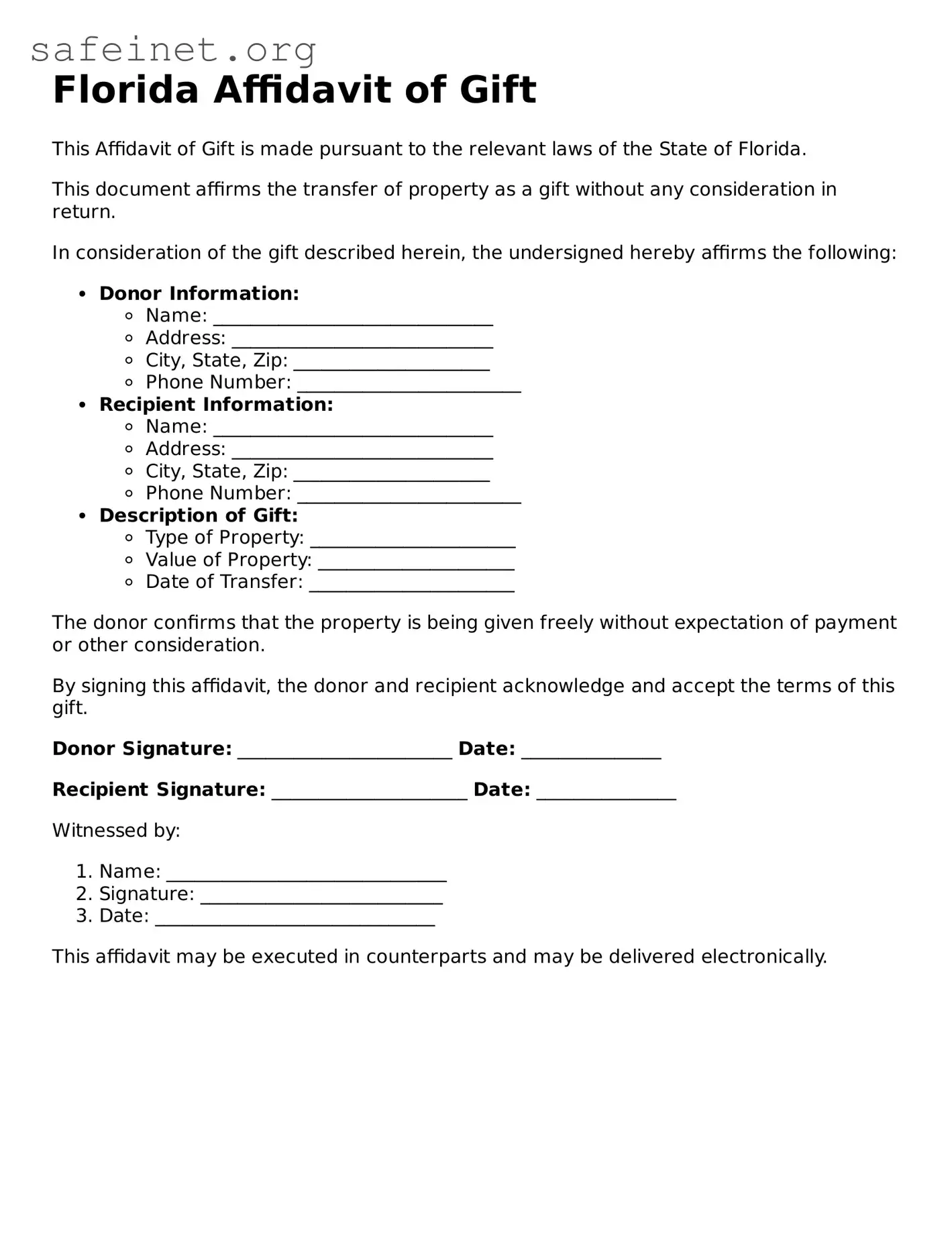The Florida Affidavit of Gift form can be compared to the Gift Tax Return (Form 709) used at the federal level. Both documents serve a similar purpose—documenting the transfer of property or assets as gifts between individuals. The Gift Tax Return is filed by the donor and provides information on the value of the gift and the recipients. This form, like the Affidavit of Gift, helps ensure tax compliance and can prevent misunderstandings about the tax implications of the gift.
Another similar document is the Transfer on Death Deed. This deed allows property owners to transfer real estate to a beneficiary without the need for probate. Similar to the Affidavit of Gift, it establishes the intent to give away property while ensuring that the transfer is executed smoothly upon the owner's death. Both forms serve to clarify the intentions of the giver and streamline the process of transferring assets.
The Bill of Sale is also somewhat comparable. It is primarily used when tangible personal property is sold or given away. This document outlines the transfer of ownership and provides proof that a transaction occurred. Like the Affidavit of Gift, the Bill of Sale is designed to protect both parties involved by documenting the exchange and establishing a clear record of ownership transfer.
The Durable Power of Attorney shares some aspects with the Affidavit of Gift. While primarily focused on financial decision-making, a Durable Power of Attorney can allow an individual to make gifts on behalf of another person. Both documents recognize the legal capacity of a person to make significant financial decisions, although their focus and uses differ considerably.
The Warranty Deed is another document that can be likened to the Affidavit of Gift in terms of property transfer. A Warranty Deed provides a guarantee from the seller that they hold clear title to the property and have the right to sell it. Similarly, an Affidavit of Gift asserts that the giver has the authority to transfer ownership of the gift, ensuring there are no undisclosed liabilities or claims against the property.
In some respects, the Declaration of Trust parallels the Affidavit of Gift. A Declaration of Trust establishes a trust to manage assets for the benefit of one or more beneficiaries. This document outlines the intention of the grantor to give or manage assets in a specific manner, much like how an Affidavit of Gift indicates the intent to transfer property without expecting compensation.
The Quitclaim Deed is another form similar to the Affidavit of Gift, allowing for the transfer of real estate. This type of deed conveys any interest the grantor has in the property without guarantees regarding its legal title. Both documents are straightforward in expressing the donative intent, although a Quitclaim Deed often involves more risk due to the lack of warranties compared to other forms of deed.
The Deed of Gift is almost identical to the Affidavit of Gift in purpose and function. It is specifically designed to transfer ownership of personal property from one party to another without compensation. Both documents are focused on the transfer of ownership and ensure that the intentions of the giver are clear and legally recognized.
Lastly, the Gift Agreement can be compared to the Affidavit of Gift, as both documents formalize the gesture of giving. A Gift Agreement outlines the specifics of the gift, including the donor's intent and any conditions associated with the gift. Similar to the Affidavit of Gift, it serves to prevent disputes and clarify the terms under which the gift is made, ultimately reflecting the wishes of the donor.
